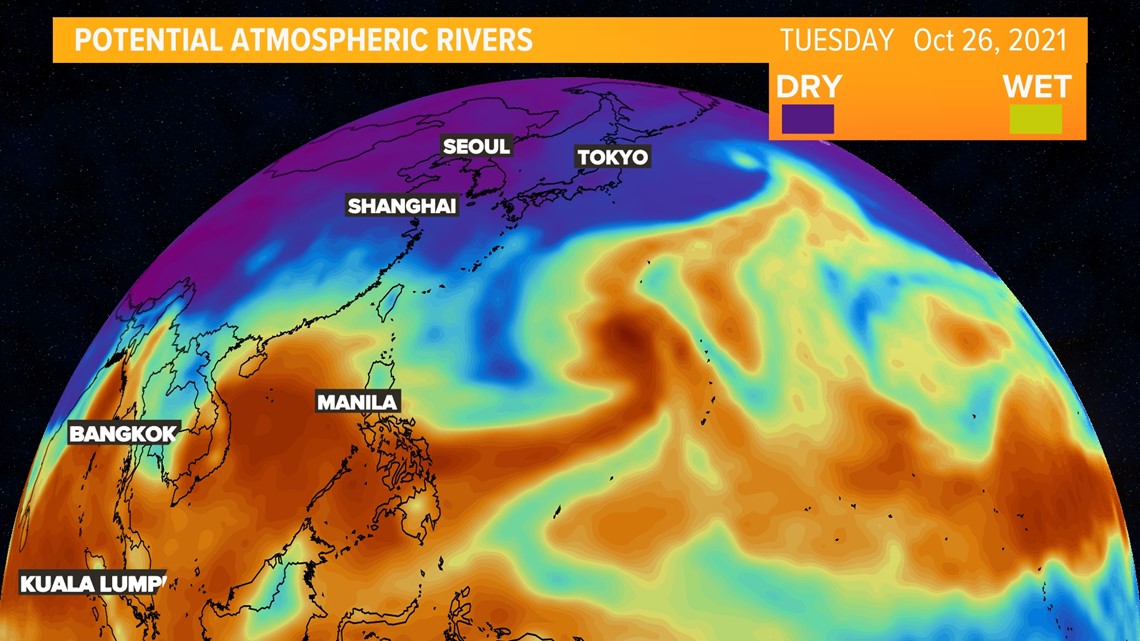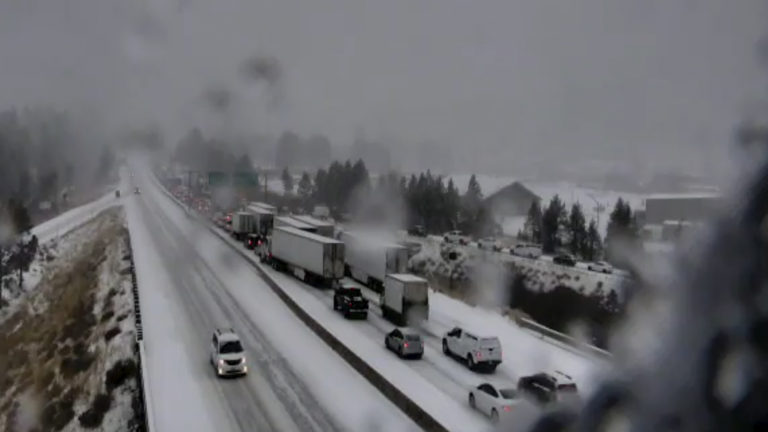
"Given the amount of moisture aiming at the northern and central Sierra Nevada, there can easily be 60-100 inches of snow at levels above 8,000 feet," AccuWeather Senior Storm Warning Meteorologist Rich Putnam said. Snow will begin to fall at elevations above 8,000 feet, but then drop down to elevations around 6,000 feet by Monday, AccuWeather said. A waterspout is an intense columnar vortex (usually appearing as a funnel-shaped cloud) that occurs over a body of water. A bomb cyclone is a system that drops at least 24 mb in pressure 24 hours or less and typically the lower the pressure, the stronger the storm.
#Pacific northwest weather bomb cyclone update
For an update later tonight, sign up for the Evening Briefing.

This news is developing into the evening. in a state known for extreme weather, California has seen this sort of thing before. Gavin Newsom declares drought emergency across California, calls for statewide conservation Bomb cyclones in 2021 are compared with the Big Blow of 1962. "This rainfall is coming about a month ahead of average and will be very welcome in fighting the remaining fires, particularly in Northern California," Porter said. The storms will effectively end the wildfire season in much of the region, AccuWeather's Porter said. Wildfires have burned almost 2 million acres in California in 2021 alone.

Seventeen major wildfires are burning in California, Idaho, Montana, Oregon and Washington, according to the National Interagency Fire Center. Gavin Newsom just last week declared a drought emergency for the entire state, citing three years of drought across the West. Pacific Gas & Electric said it had thousands of workers ready to respond to outages.

Parts of Oregon were under siege from strong winds and heavy rains. "This atmospheric river storm is expected to intensify with heavy rain and significant snow into tomorrow. "Flooding, rock slides, chain controls, overturned vehicles – and that was just this morning," the California Transportation Department tweeted Sunday. The National Weather Service Bay Area issued a plethora of flash flood watches, saying on Twitter: "Main concern will be 2020 burn scars but urban and small stream flooding likely as the heavy rain band passes through Sunday afternoon and night." Rainfall of up to 2 inches an hour may come "too fast and too furious," leading to serious flooding and mudslides that could threaten lives and property, Porter added. The characteristics of these storms can be compared to that of a strong tropical storm or even a hurricane.The storm was most severe in the northern and central portions of California and part of southern Oregon, with the greatest intensity lasting into Monday, he said. These cases require the collision of two, opposing regimes of air - an Arctic air mass and a tropical air mass.Ī "bomb" cyclone does not necessarily have to occur over land or achieve a certain size, the pressure drop is the only requirement for a storm to officially be undergoing "bombogenesis". However, there have been cases of bombogenesis occurring with storm systems moving from the Rockies into the Midwest. Nor'Easters are most notorious for going through the bombogenesis process, often providing large swaths of 1 to 2 feet of snow during mid-Atlantic and Northeast winters. As a result, the majority of "bomb" cylcones occur from October to March. A powerful Pacific storm will become a 'bomb cyclone' as it delivers heavy rain, mountain snow and gusty winds to the Pacific Northwest on Thursday, the latest system in a parade of atmospheric rivers set to drench the West Coast into next week. In the winter, there is an abundance of cold, Arctic air pouring into the United States creating these sharp gradients, especially over coastal areas.

A temperature gradient simply means the amount a temperature changes over a distance, with stronger temperature gradients leading to strengthening cyclones. Published OctoLatest 'bomb cyclone' sets record for strongest storm off Pacific Northwest The storm strengthened to 943 millibars for its central pressure reading Sunday morning, tying the all-time lowest central pressure measured for a storm in that region of the ocean near the Pacific Northwest coastline. 2021 as several low-pressure systems rolled in from the northeast Pacific Ocean.
#Pacific northwest weather bomb cyclone series
The warm water creates a strong temperature gradient from its surface to the atmosphere just above it. Bomb Cyclone and Atmospheric River Hit the Pacific Northwest Thursday, OctoThe Pacific Northwest experienced a memorable series of storms in late Oct. "Bomb" cyclones occur most frequently along coastlines where warm water is available. The criteria is a 24 millibar pressure drop over the course of 24 hours. Bombogenesis refers to a cyclone, or low pressure system, with a rapidly deepening barometric pressure. While this name may seem sensationalized, it is in fact a legitimate meteorological term. As we progress into winter, you will likely hear the term "bombogenesis" or "bomb" cyclone used time and time again.


 0 kommentar(er)
0 kommentar(er)
